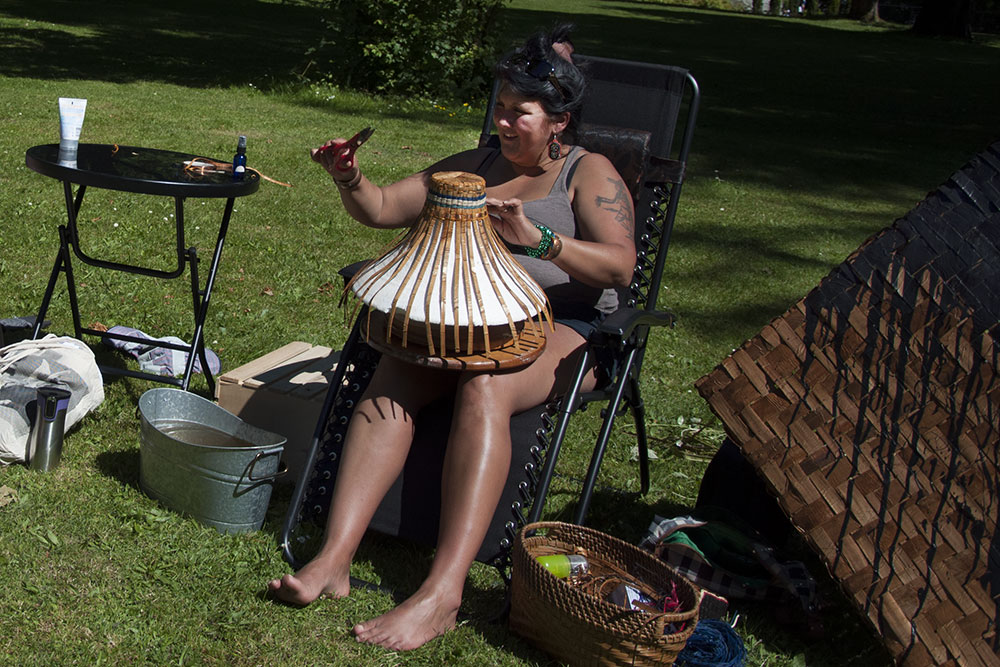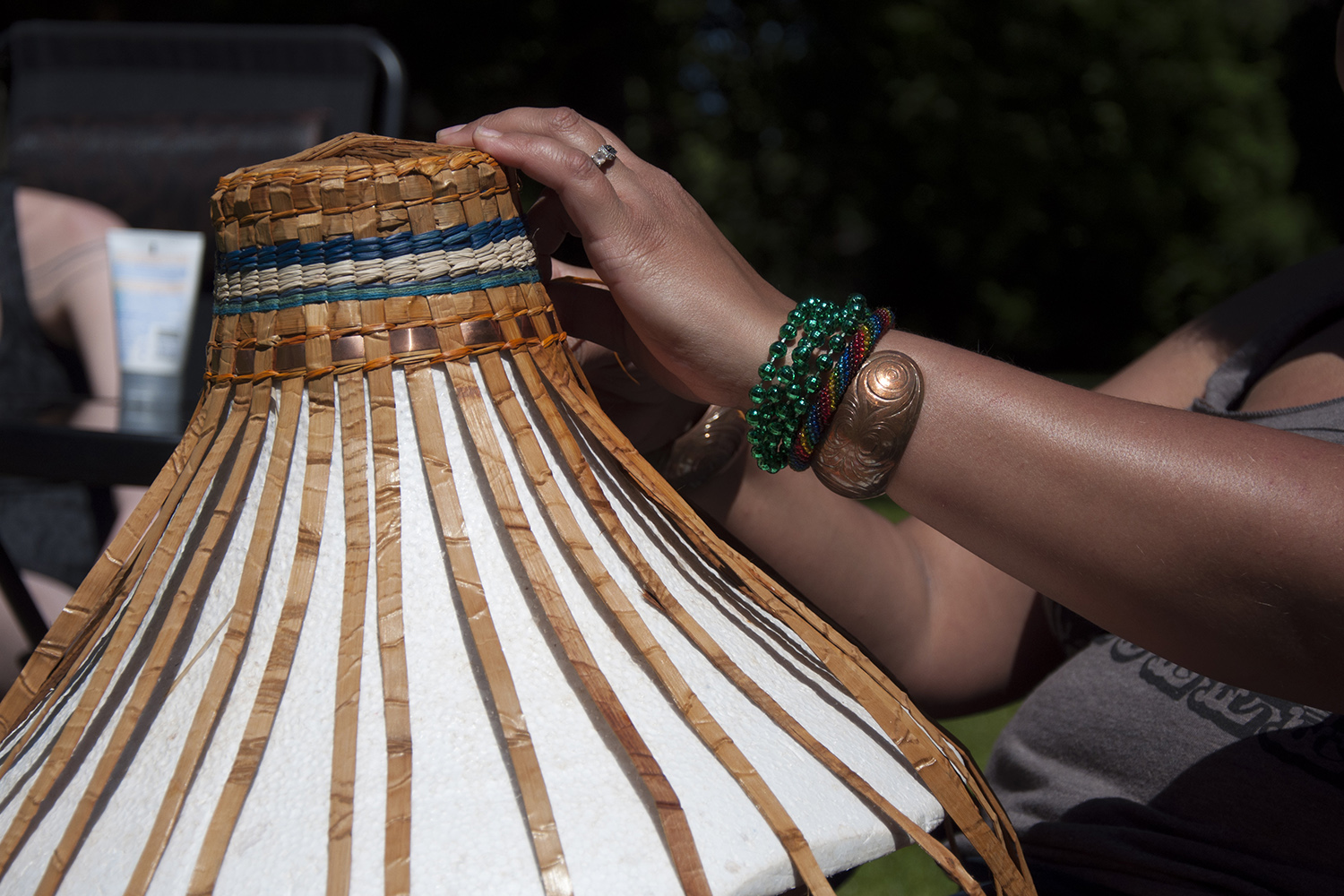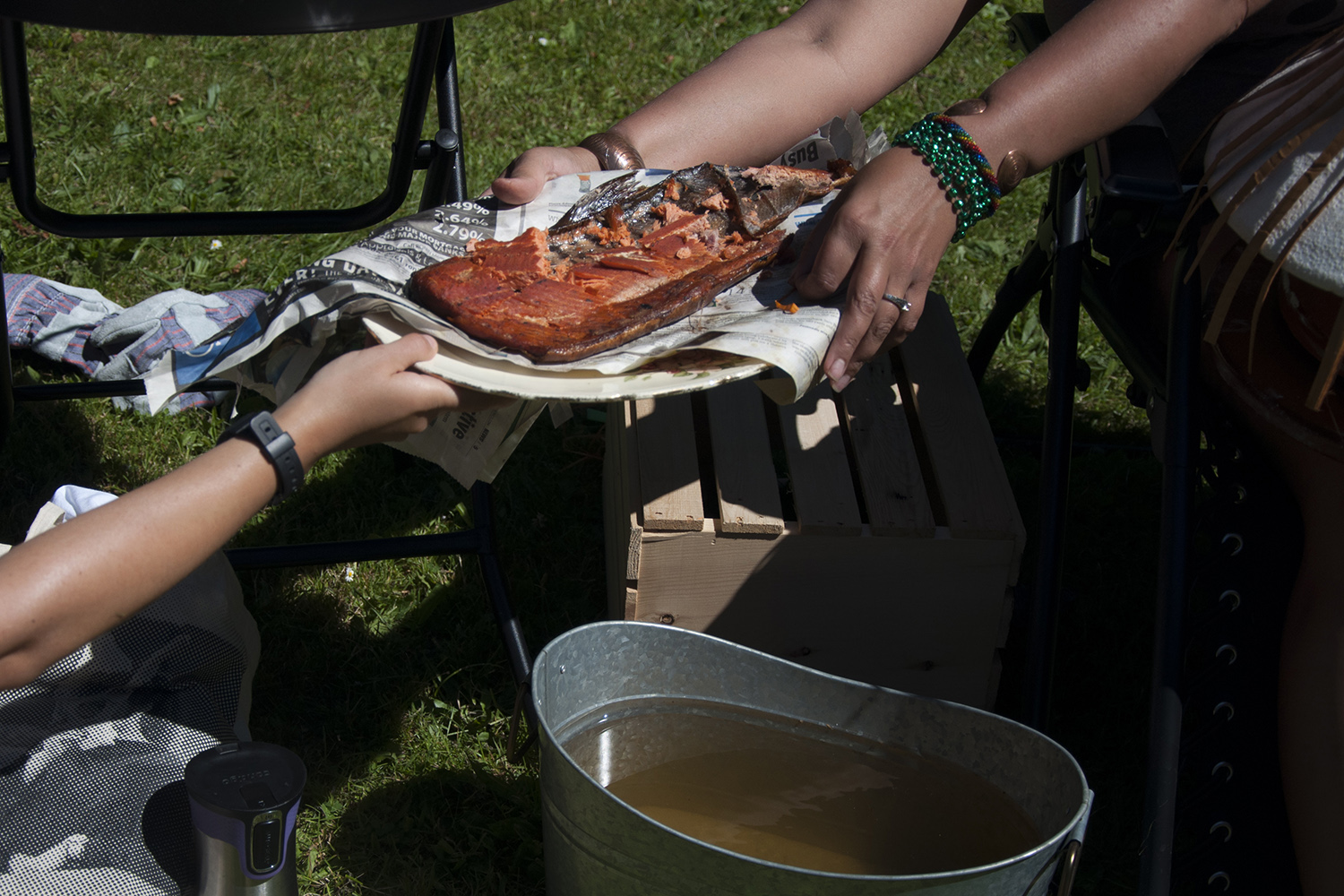June 22nd - 23rd 2017
Site specific installations and perfomative events at Stanley Park Vancouver
Thursday June 22nd
10am – 8pm: artworks installed
10am: opening reception at A-frame artists residency
11am: Plastic Picnic, performative installation by Stephanie Gagne
2pm – 5pm: Artist sit-in by Roxanne Charles
Friday June 23rd:
10am – 8pm: artworks installed
3pm: public tour of artworks
2pm – 5pm: Artist sit-in by Roxanne Charles
8pm - 9pm: Hollow, brochure and projection event
Documentation of works:
Colonial Sites:
The Colonial Sites Project is created by the students of the Laboratory Landscape. It is a textual and photographic documentation project investigating the systemic presence and wide variety of Colonial sites and artefacts present in our everyday lives. In so doing, the Colonial Sites Project questions conventional archives and histories and proposes a reconsideration of Canada’s colonial legacy. Viewers can examine the growing documentation of the project, carried out by the Laboratory Landscape class and by the general public at previous exhibitions. They are invited to identify their own Colonial Site in the process, and write it into this new archive.
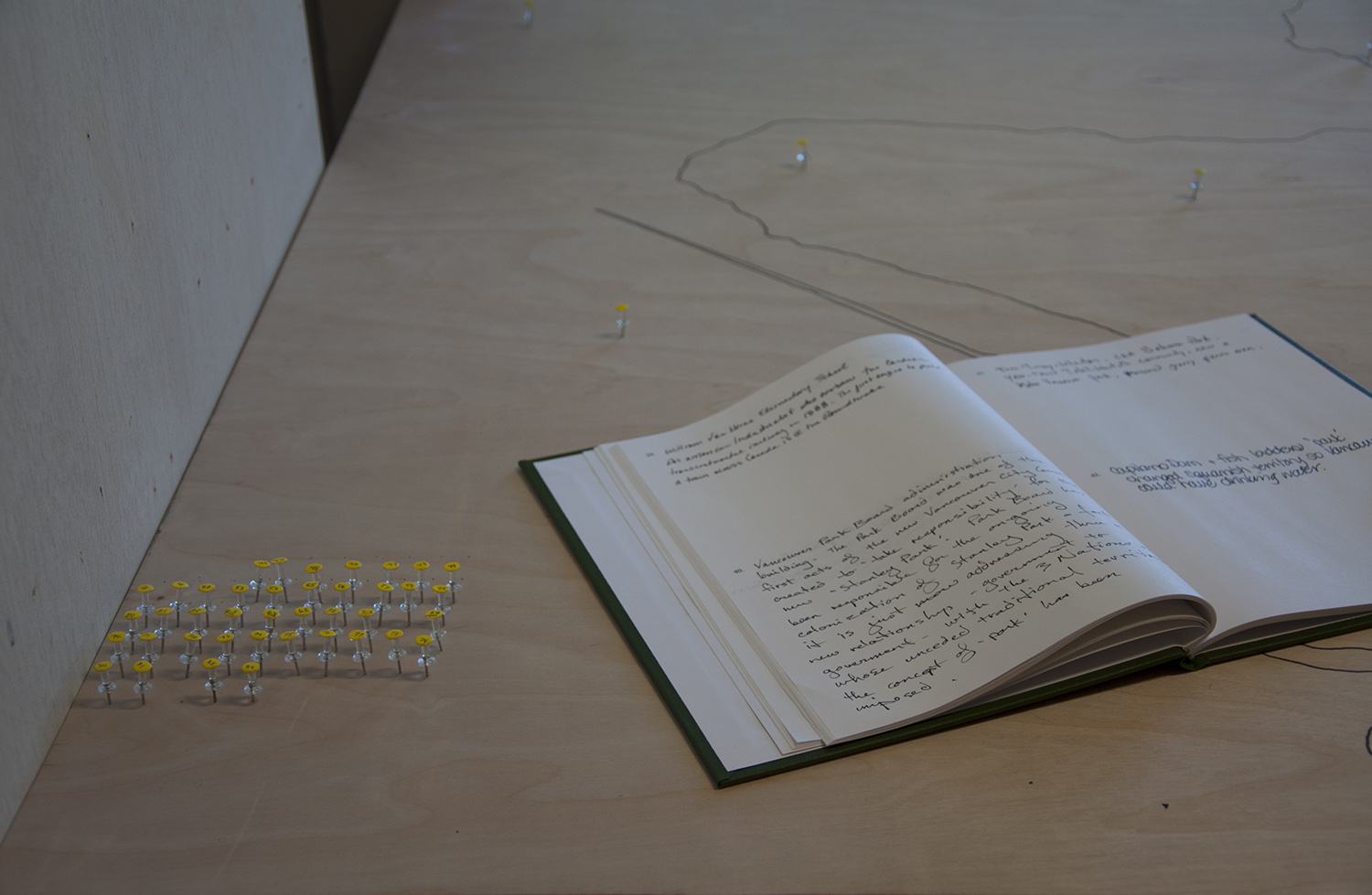
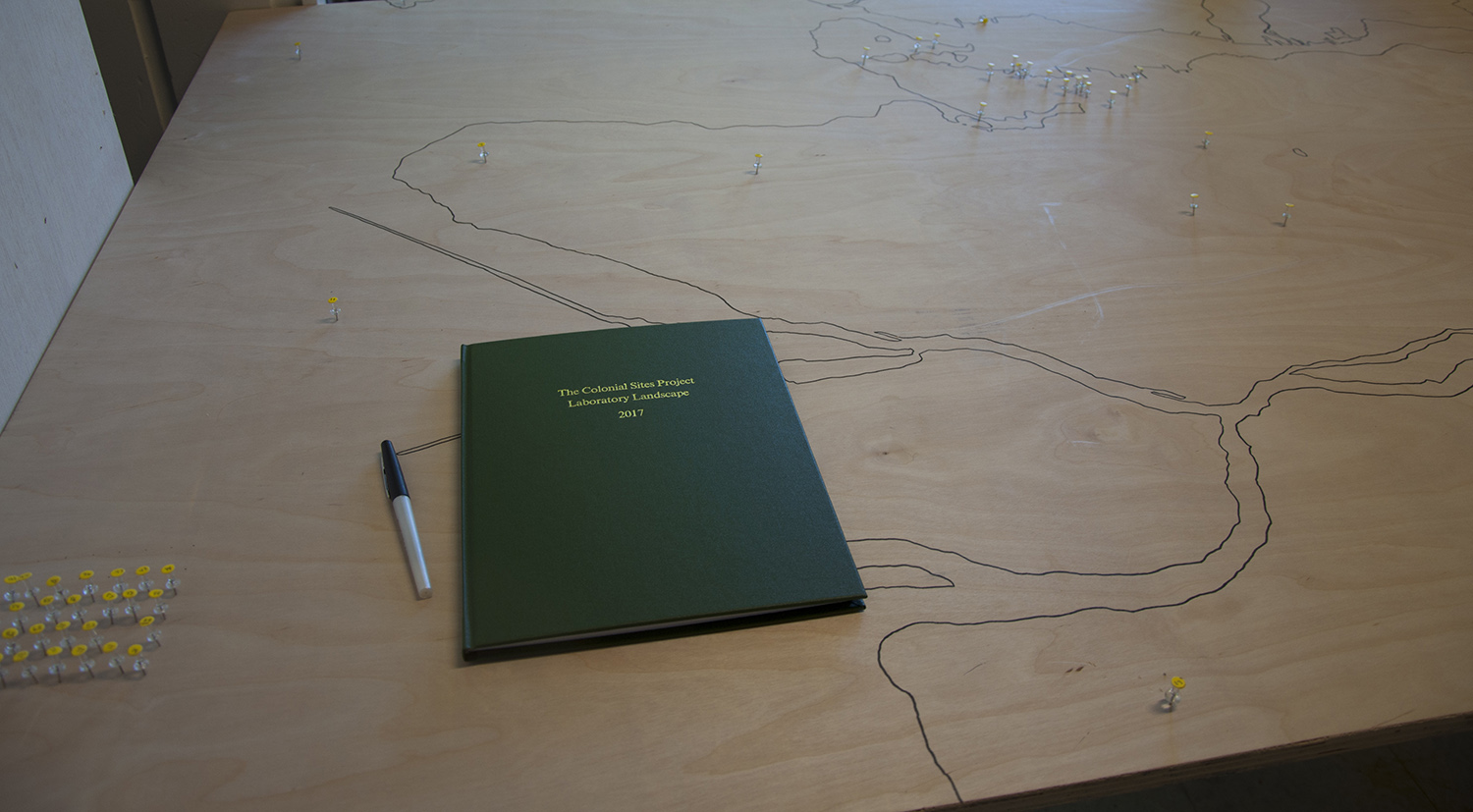
Bear Garden by Emily Marston
Referencing canonical 19th century paintings of ruinous landscapes, Bear Garden is a photographic installation that depicts the former Stanley Park Polar Bear Pit as a ruin, transforming abandoned space into dramatic absence. The project’s title references 16th century English bear gardens where bear-baiting — itself a “ruin” of Roman antiquity — was a popular form of public entertainment. As part of the Stanley Park Zoo, the concrete pit housed polar bears form 1962 to 1996, and has since sat abandoned. By calling attention to the monumental quality of the brutalist architecture, the space is re-represented to confront the viewer’s role in the production of the spectacular.
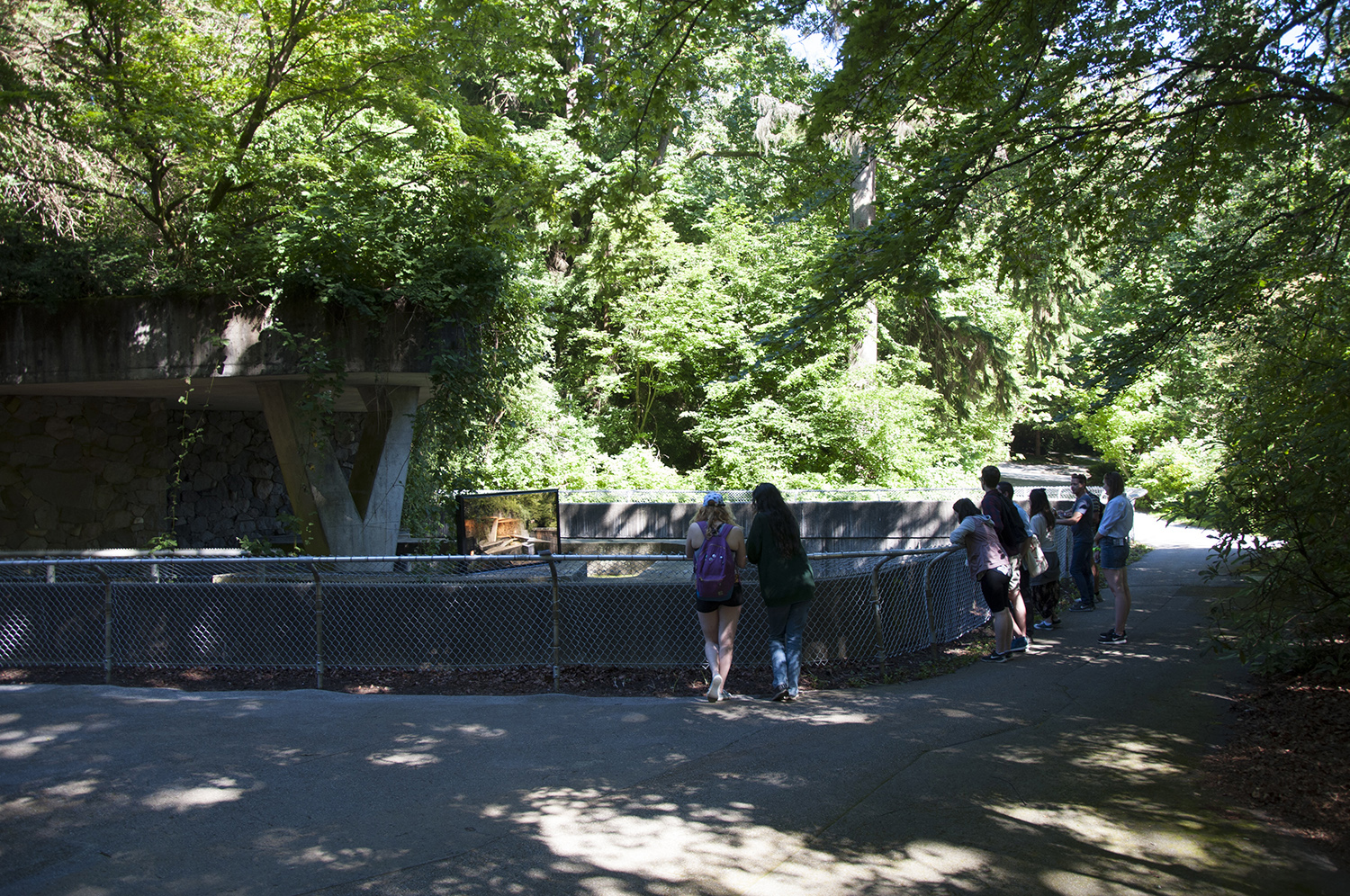
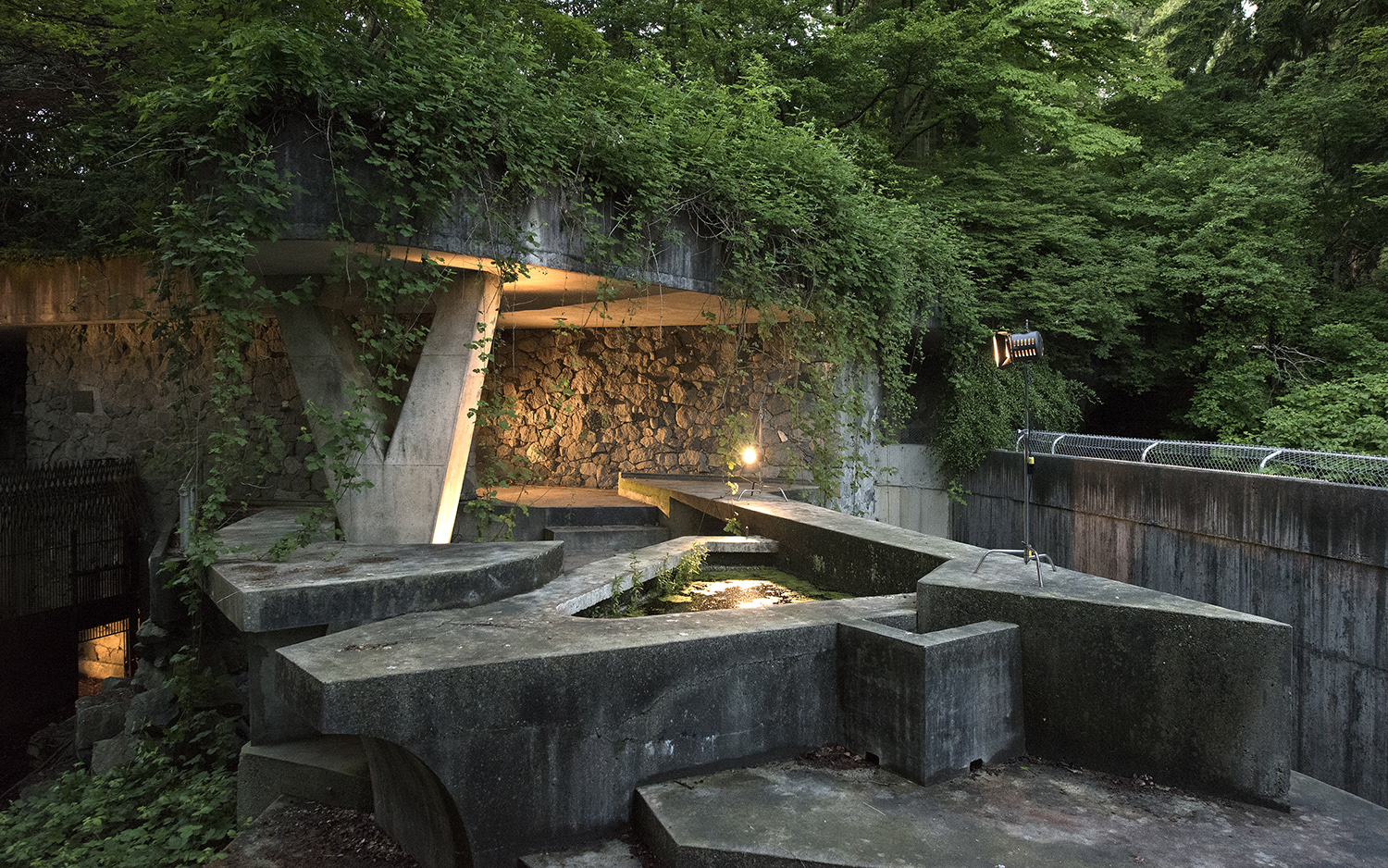
Let Me In by Jessica Chu, Michelle Gougani & Nico Yu
Responding to the Rose Garden and Lord Stanley statue in Stanley Park, Let Me In uses material and conceptual strategies of a curtain to ambiguously divide and conceal space. This simultaneous act of cover and reveal grounds our presence and understanding of the park. The disruption of visibility and of the flow of traffic at both locations invite us to take a closer look at both subjects and at the curtains themselves. While the accompanying text asks us to reconsider our sense of belonging in the park, and interrogate how we know, and share these sites.
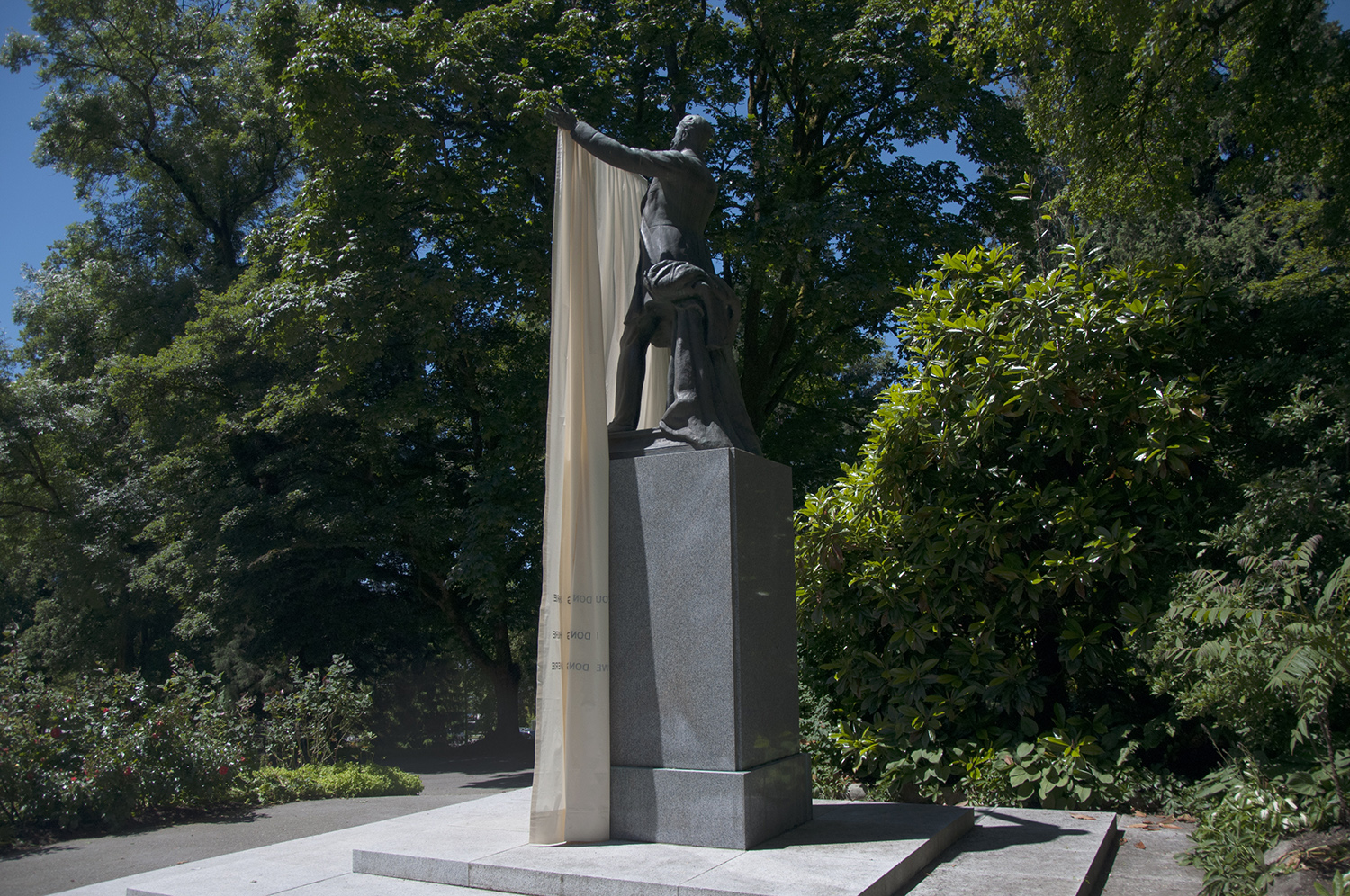
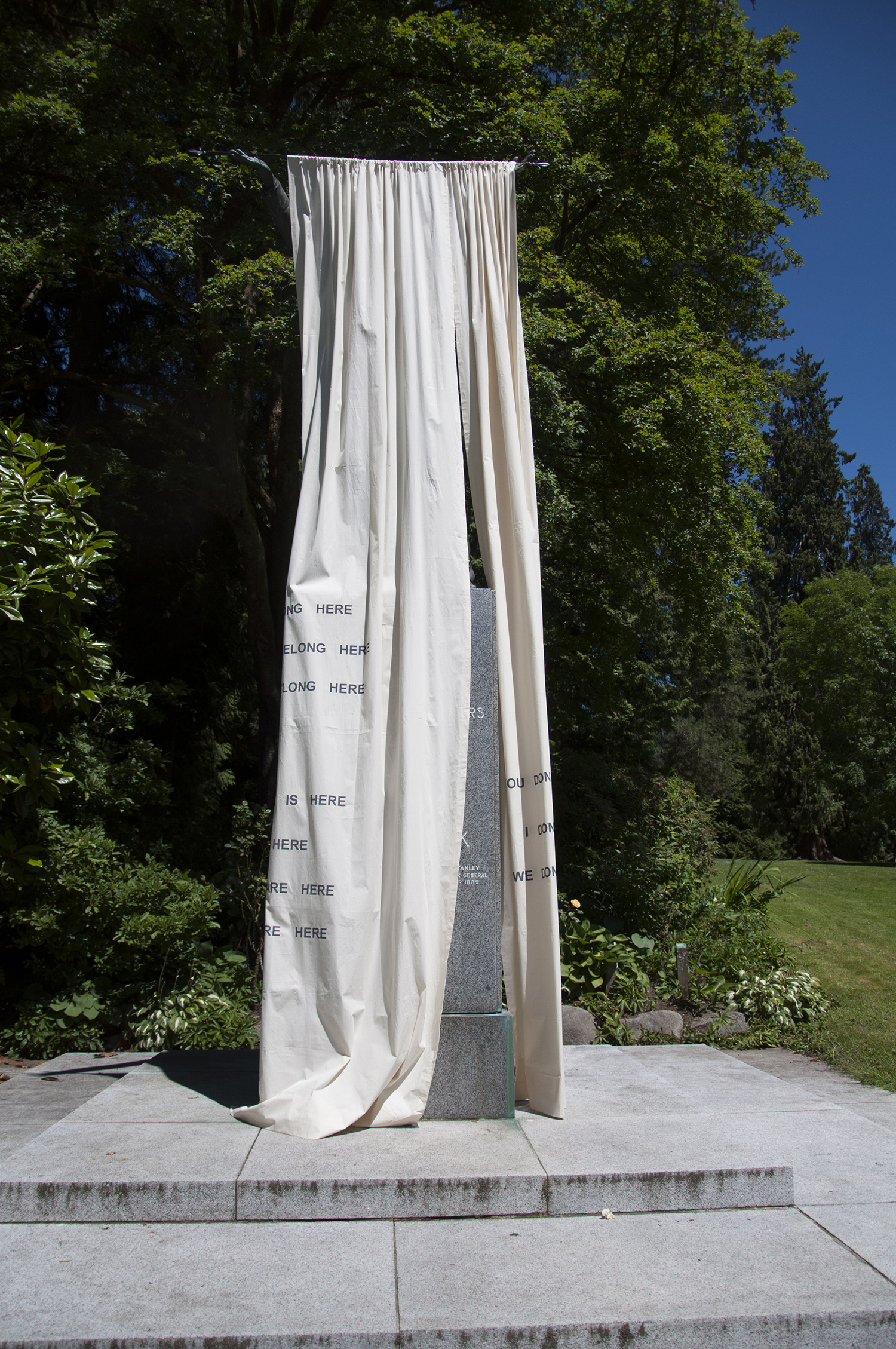
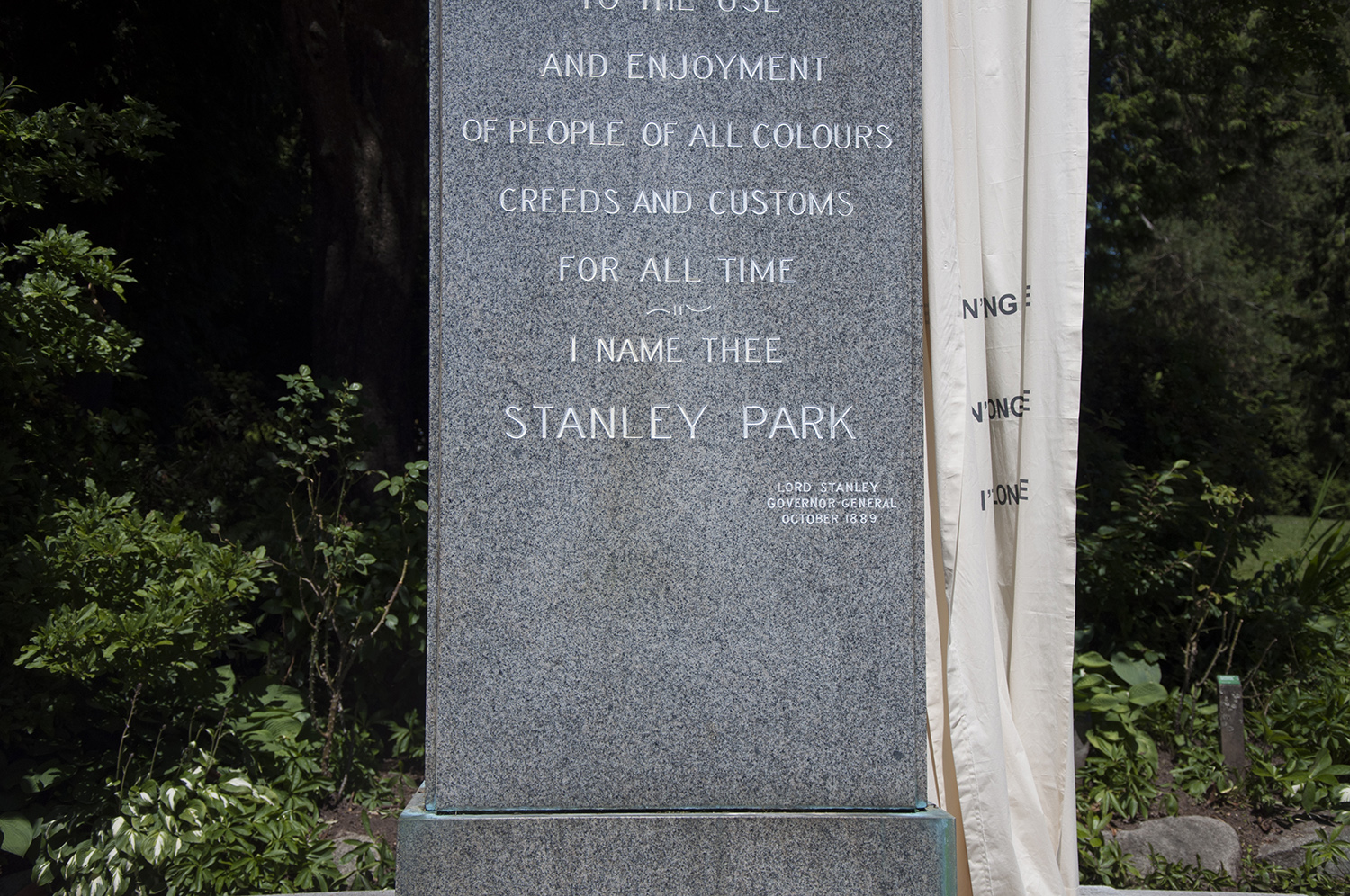
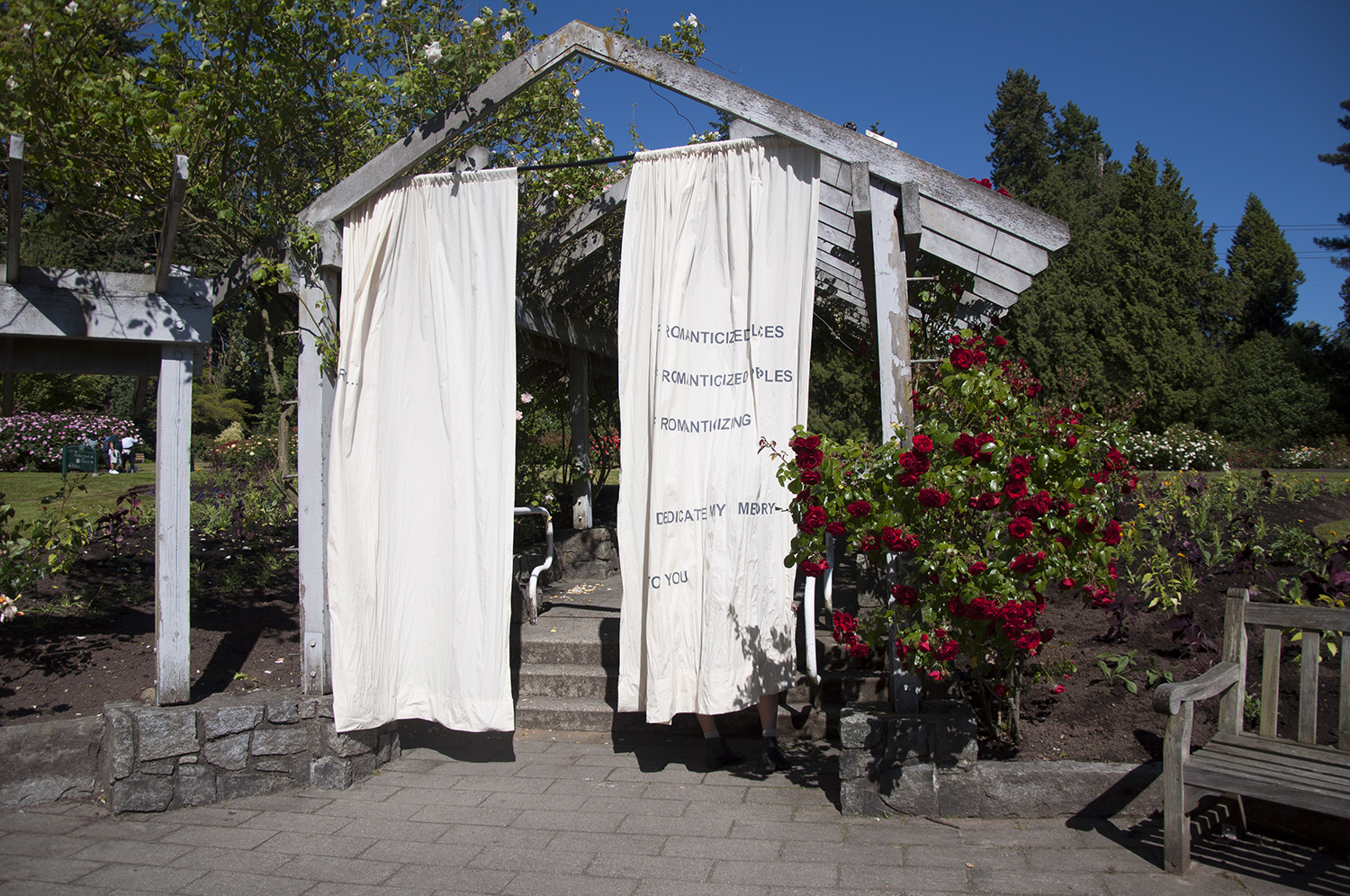
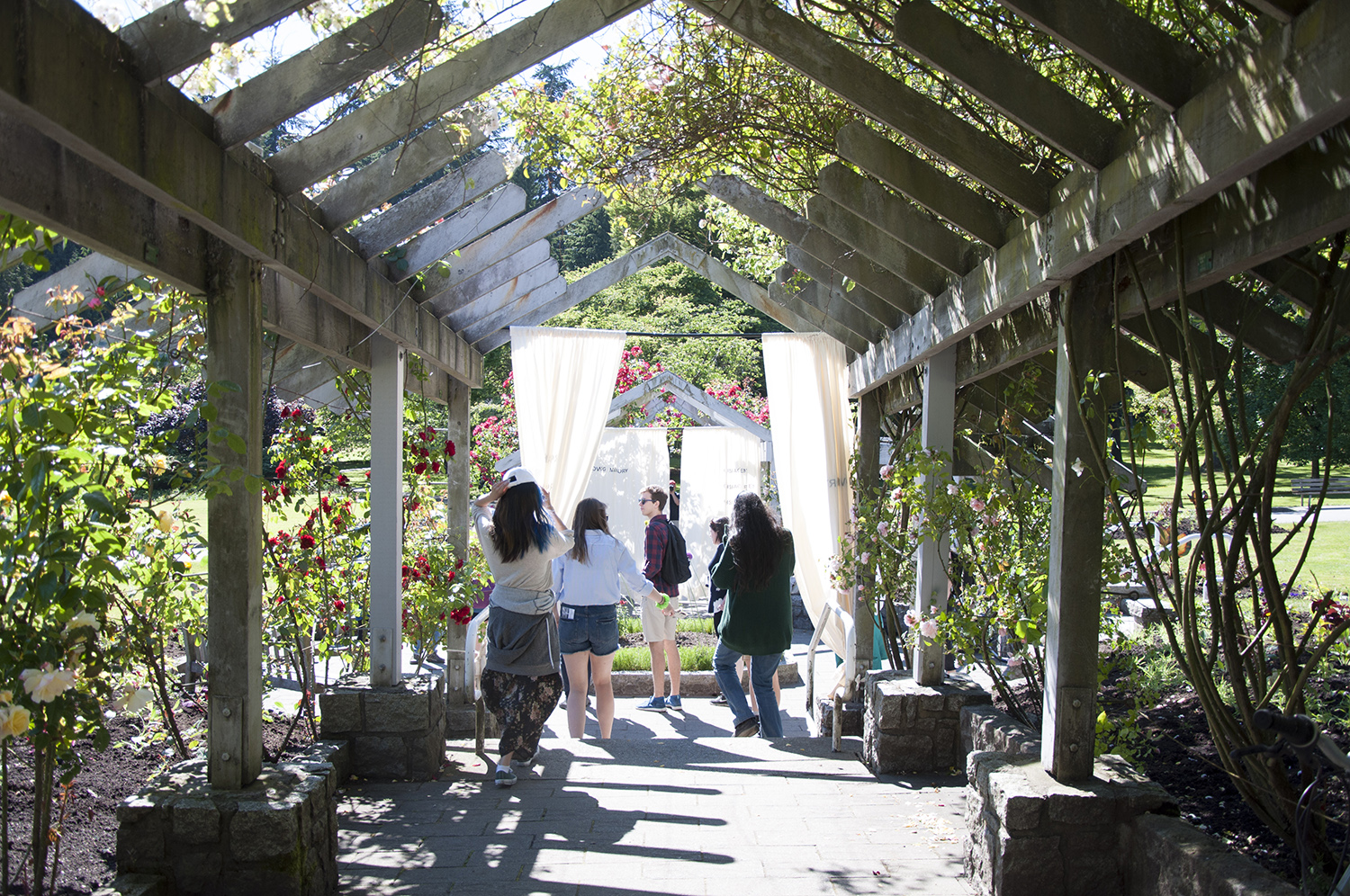
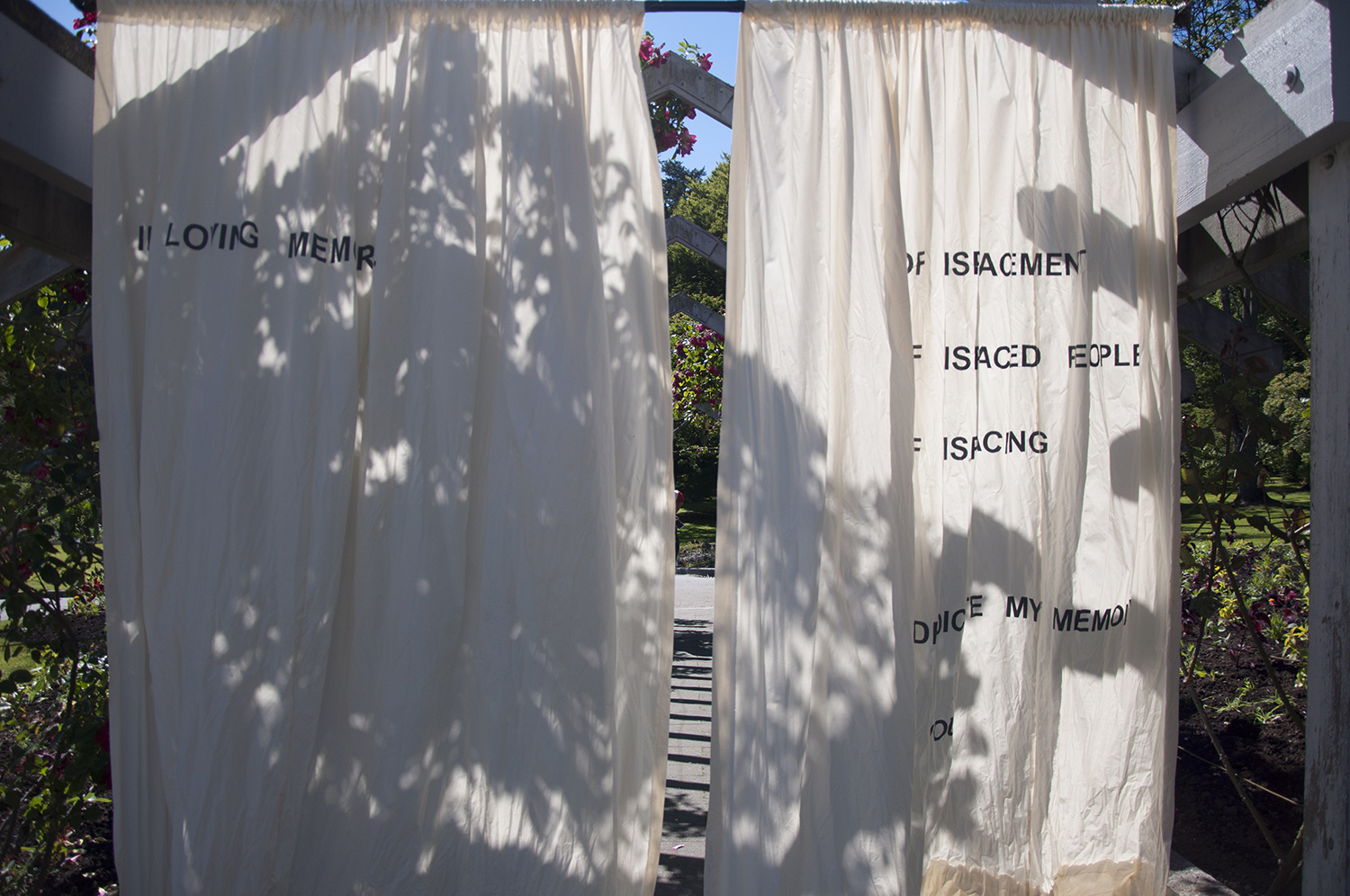
Can-odes by Krystle Coughlin & Rachelle Tjahyana
Can-odes consists of 150+ paper canoes exhibited at the Stanley Park Nature House, available for visitors to take and keep. They are repurposed from invasive plant species present in the park, and contain sketches, notes, and poems of the research and development process. The canoes also display a map of the park which visitors can use to locate fallen and felled logs that were previously considered for a life-size canoe sculpture in the project’s first iteration. Through materials, and the form of the canoe — a simultaneously universal, but culturally specific object — Can-odes explores and acknowledges the complex, and often difficult histories of social and natural migration and immigration that have shaped the park and our presence as uninvited guests on this territory.
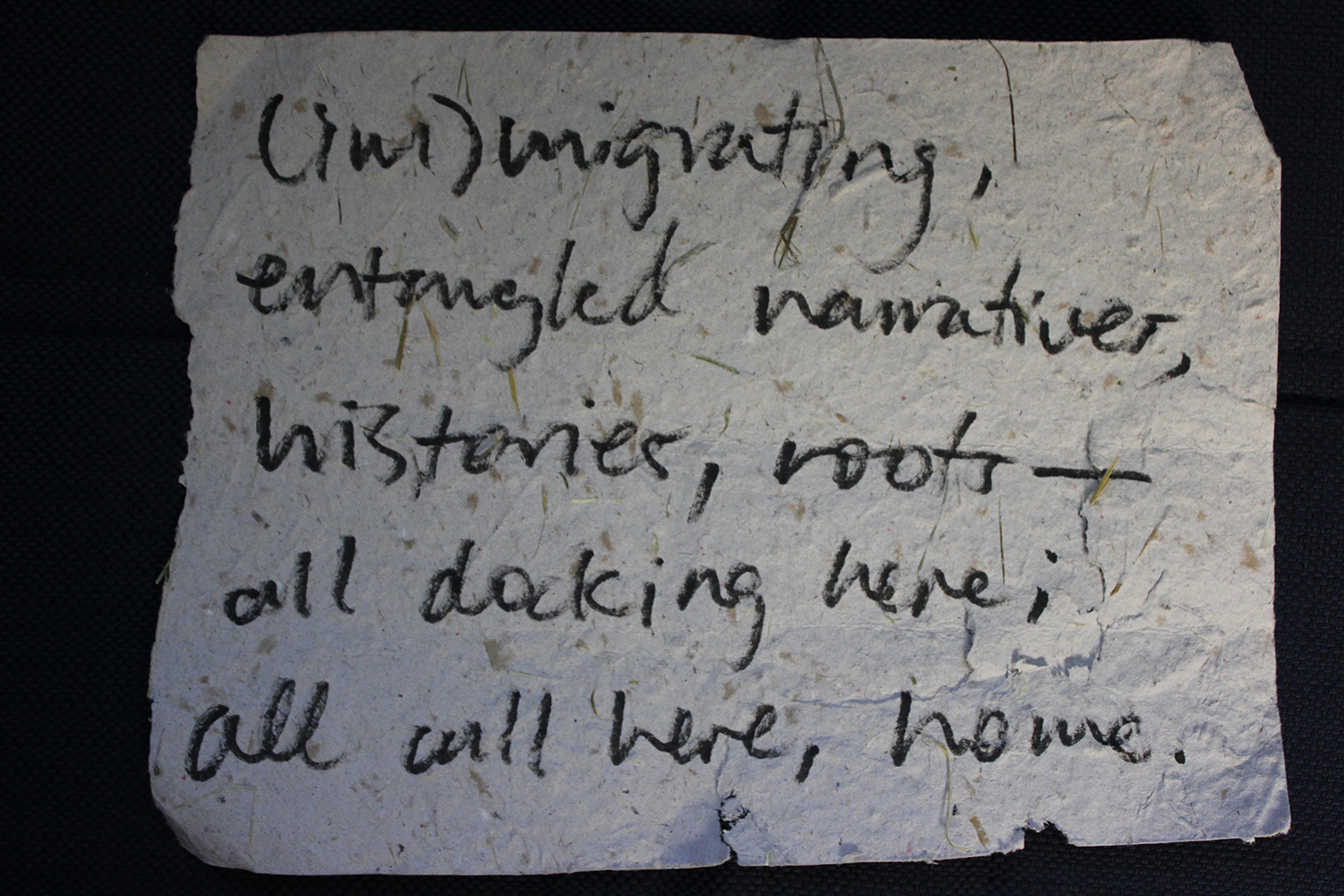
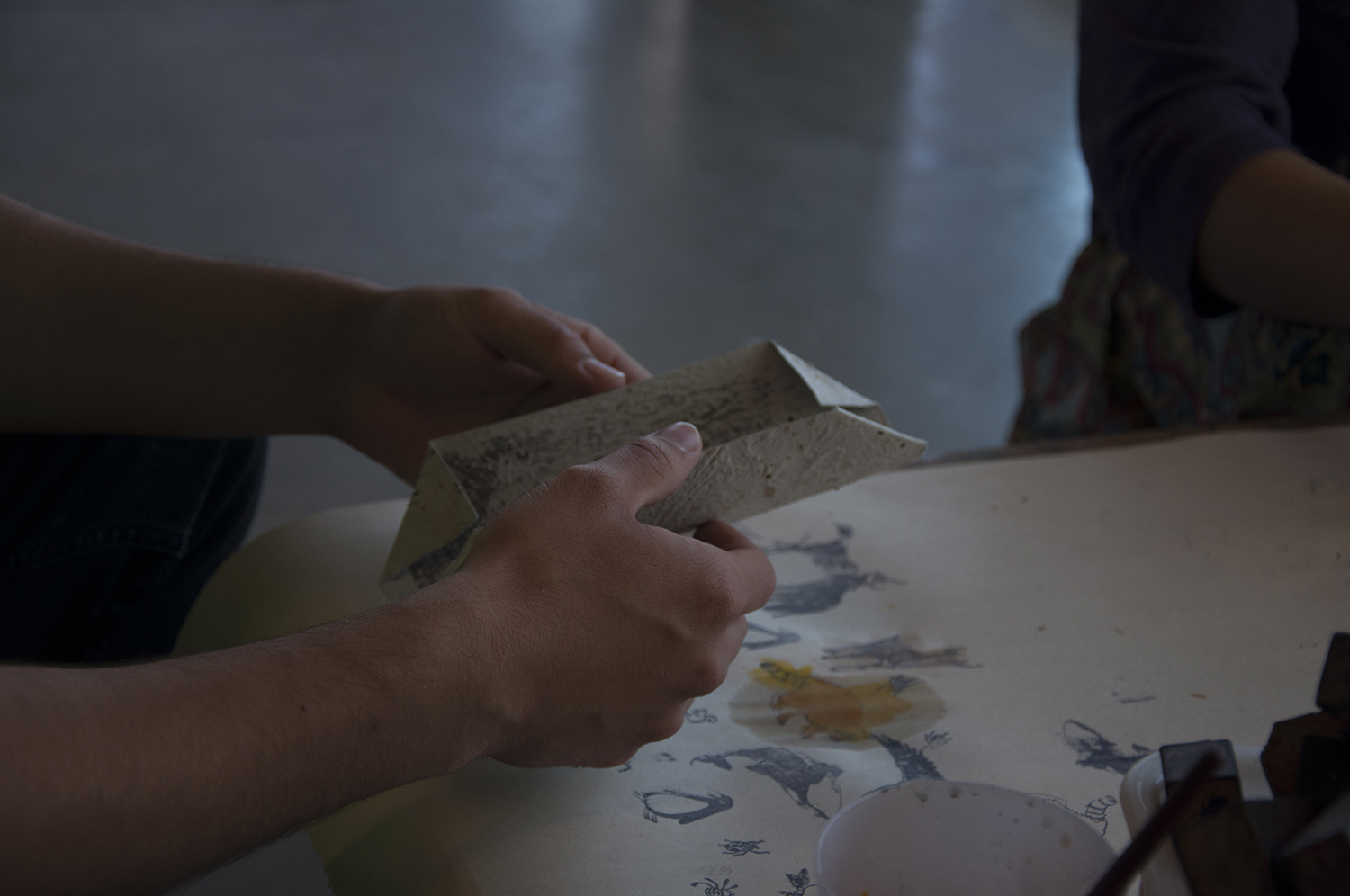
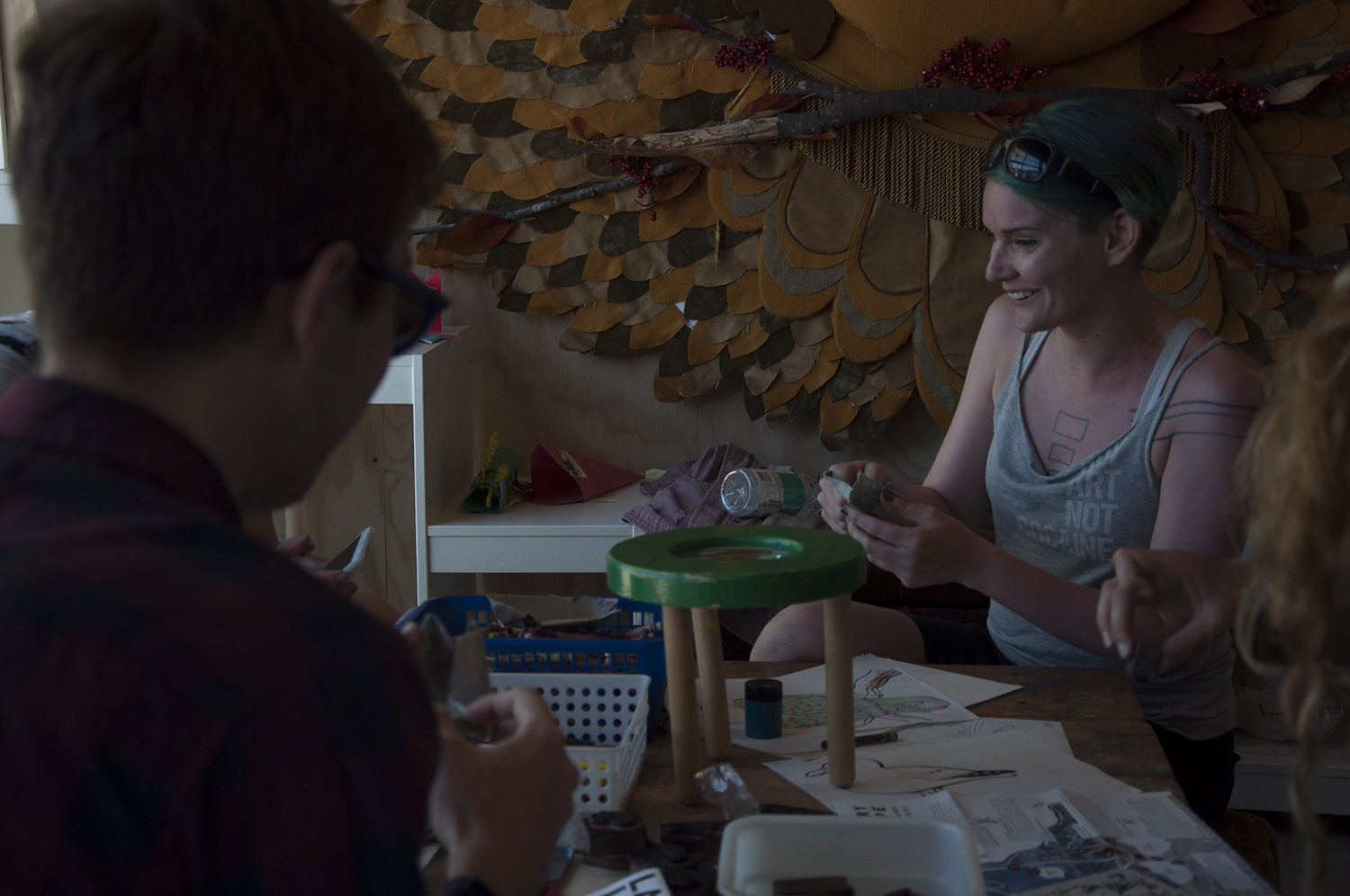
This Is Where It Started by Oscar Alfonso & Carolina Krawczyk
Located at 11 sites that surround and welcome visitors into the park, this text-based installation mirrors the park’s organization into a distinct exterior and interior, city and park, forest, and seawall. Taking the format of celebratory and decorative pennant banners, the project’s open ended confessions and admissions invite viewers to reflect on the act of celebration, and upon their understanding and assumptions of the park as a public site. As an indigenous site and the city’s premier destination for locals and tourists, everyone has a relationship to Stanley Park. In the process This Is Where It Started invites us to question the park’s shared and contested relationships and open up an intensely personal space for conversation and discourse.
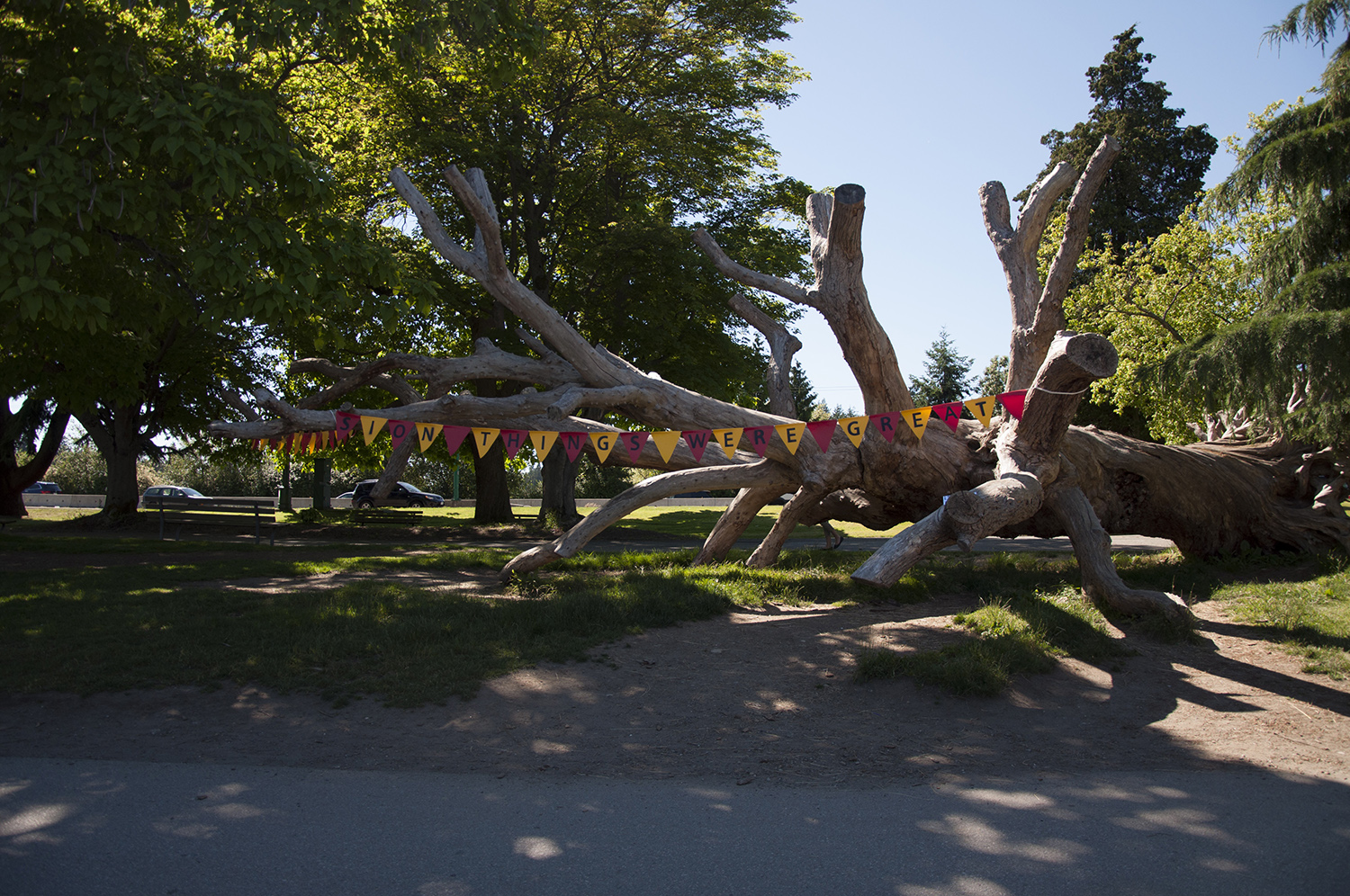
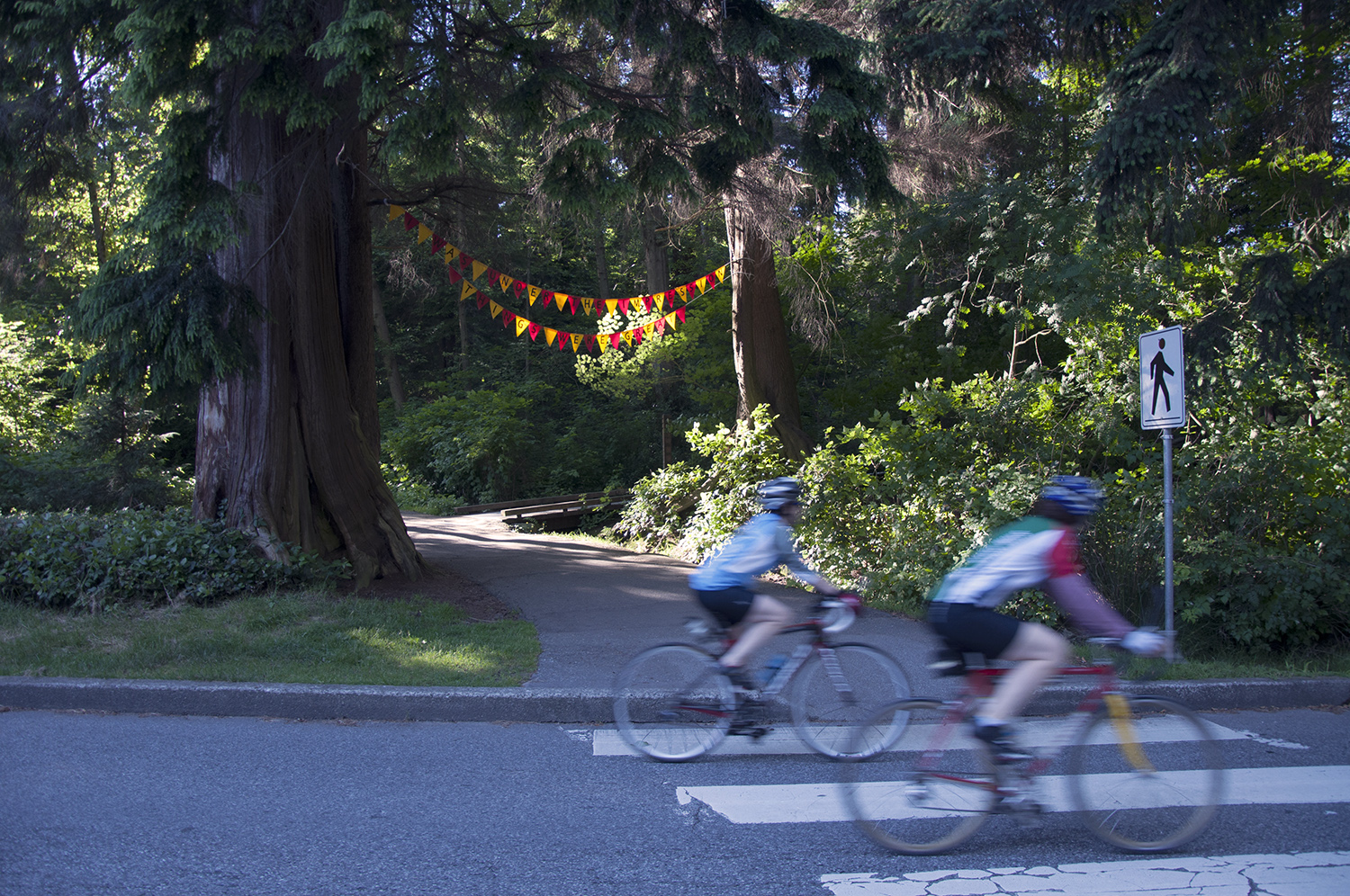
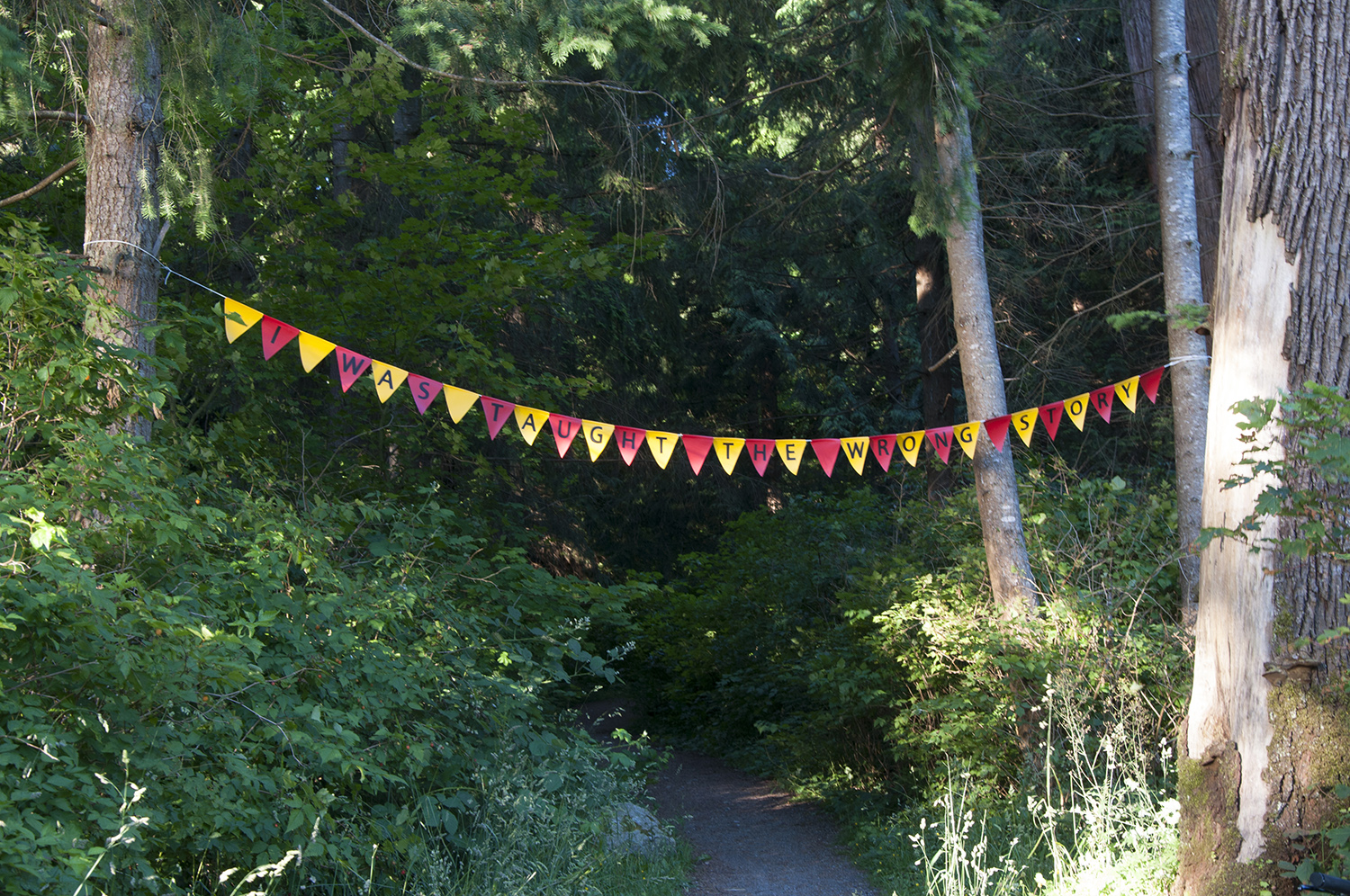
Hollow by Carli Howden, Andi Icaza-Largaespada, Sophie Van den Biggelaar
Hollow consists of a brochure and a projection event at Stanley Park’s iconic Hollow Tree. The projection responds to the tree’s surrounding environment and history, and questions the selective monumentalization of nature, as well as the tree’s role as a visual icon and site for spectacle. Meanwhile, the brochure provides a divergent perspective through a discussion of the anthropocene, and of human apprehension towards natural phenomena. Following Vancouver’s ‘Public Art’ format, the brochure also canonizes the Hollow Tree as a cultural object that has been separated from its natural environment.
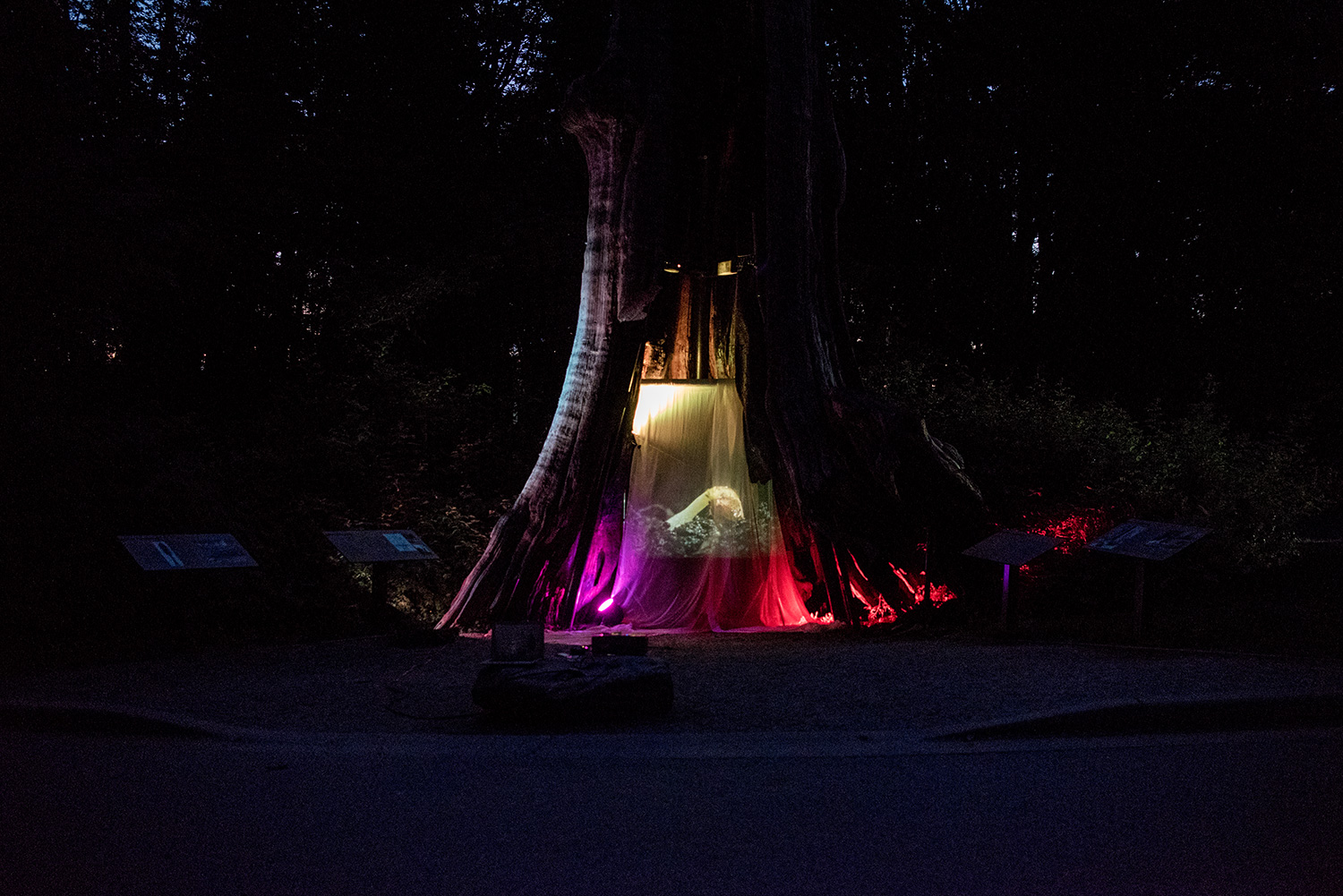
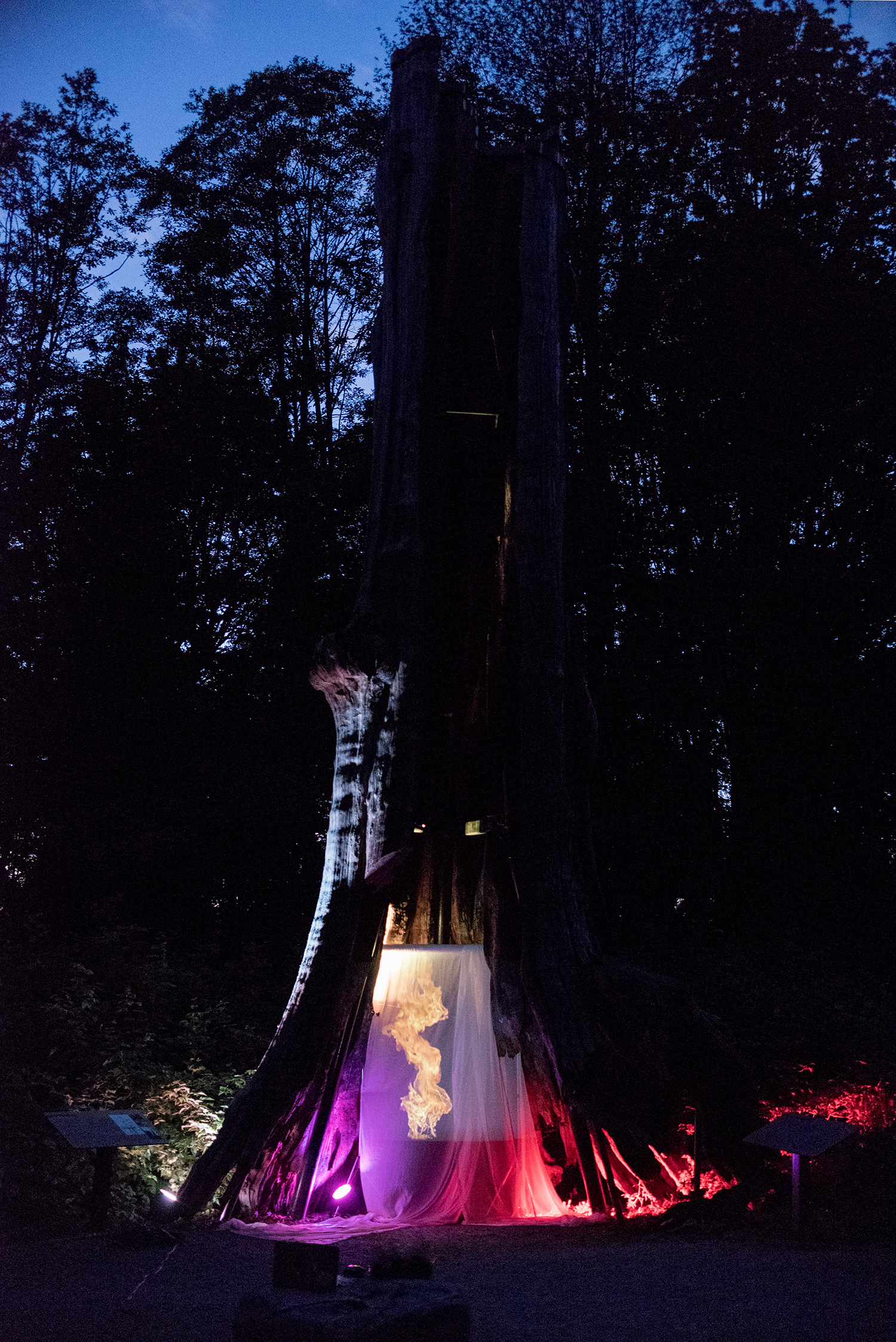
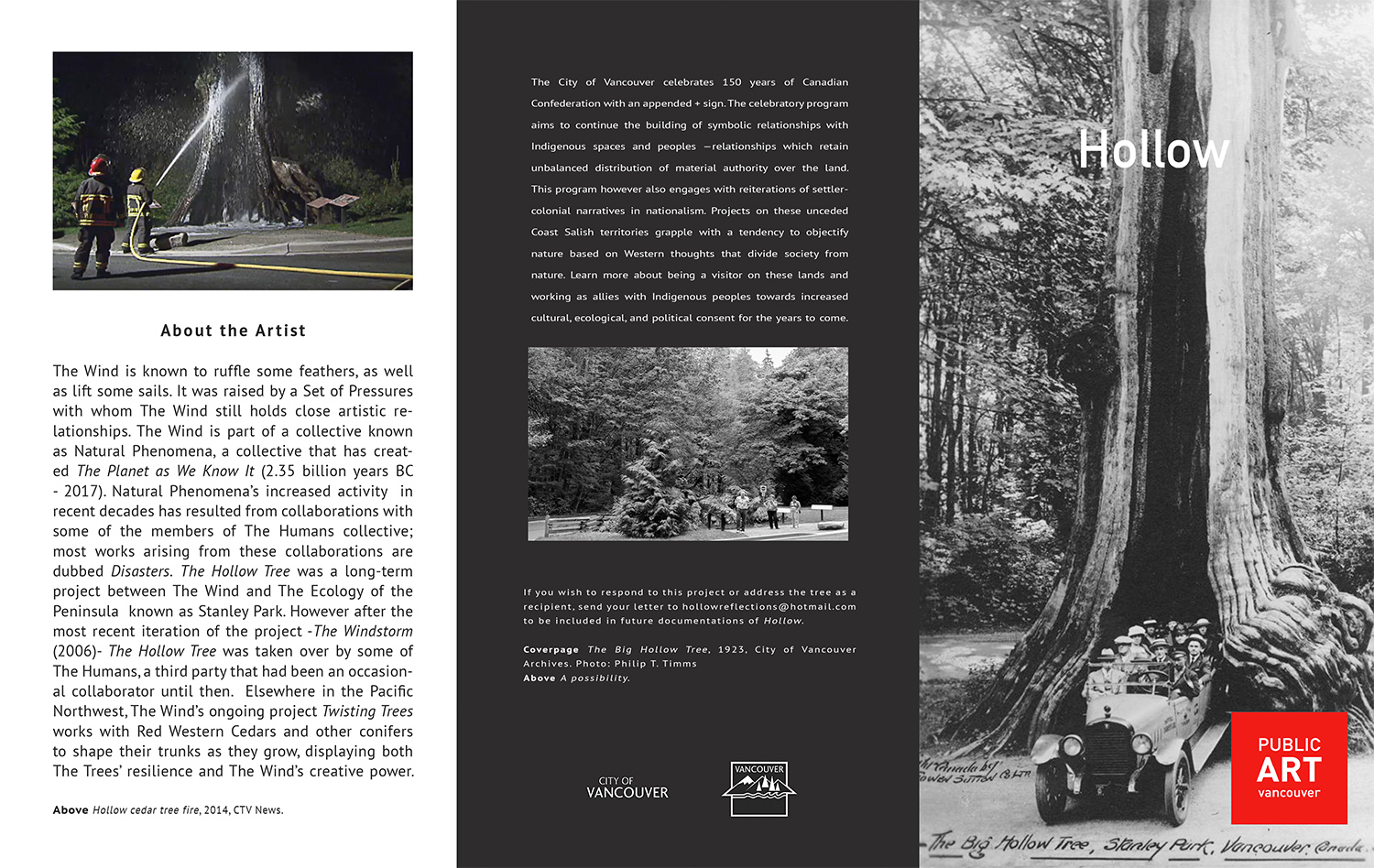
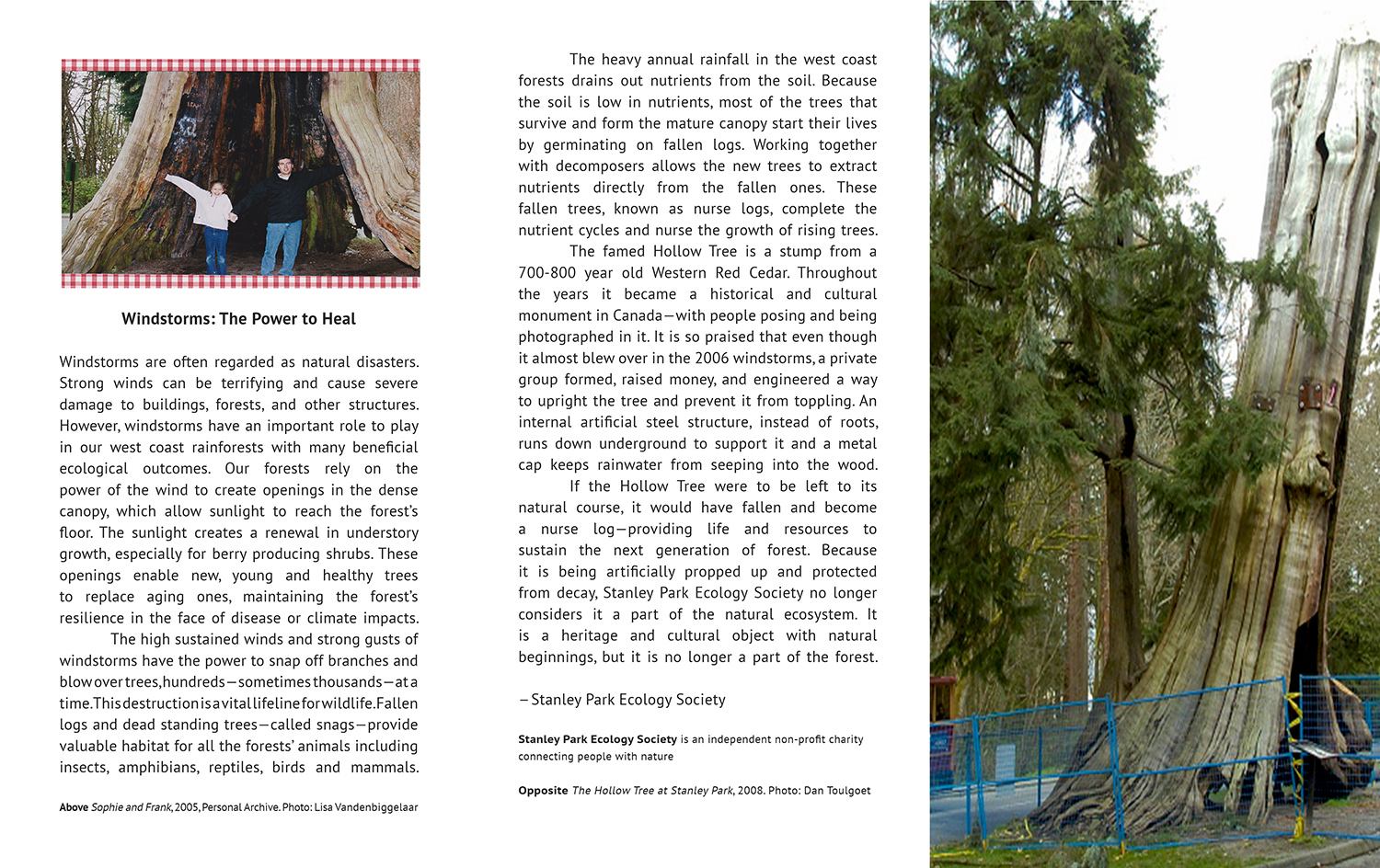
One With Nature by Josie Dawson-Whisker, Phoebe Huang, Lori Lai
One with Nature is an interactive installation questioning the domestication of nature, contrived preservation attempts and romanticization of ecological processes. At Beaver Lake, Third Beach and Stanley Park Pool/ Concession, there will be faux-motivational image upon a sign; artificial turf lays upon the ground to mimic the “natural” environment. This provides a space for exploration of the body in relation to how we alter “the wilderness”. The rearranging of preconceived perceptions of Stanley Park will attempt to disrupt typical understandings of our treasured green space and reconnect the public to uncommon knowledge that contributed to the park as we know it, today.
We acknowledge and respect Stanley Park as the traditional territories of the Coast Salish nations of the Musqueam, Tsleil-Waututh, and Squamish First Nations.
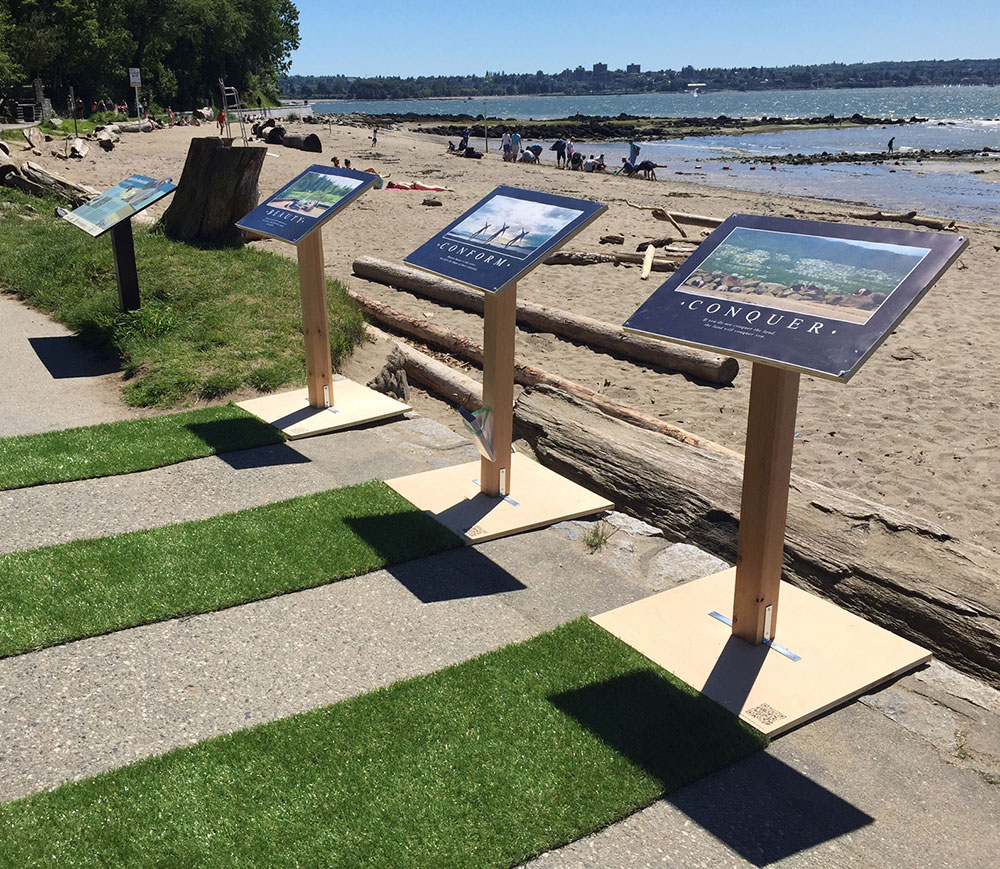
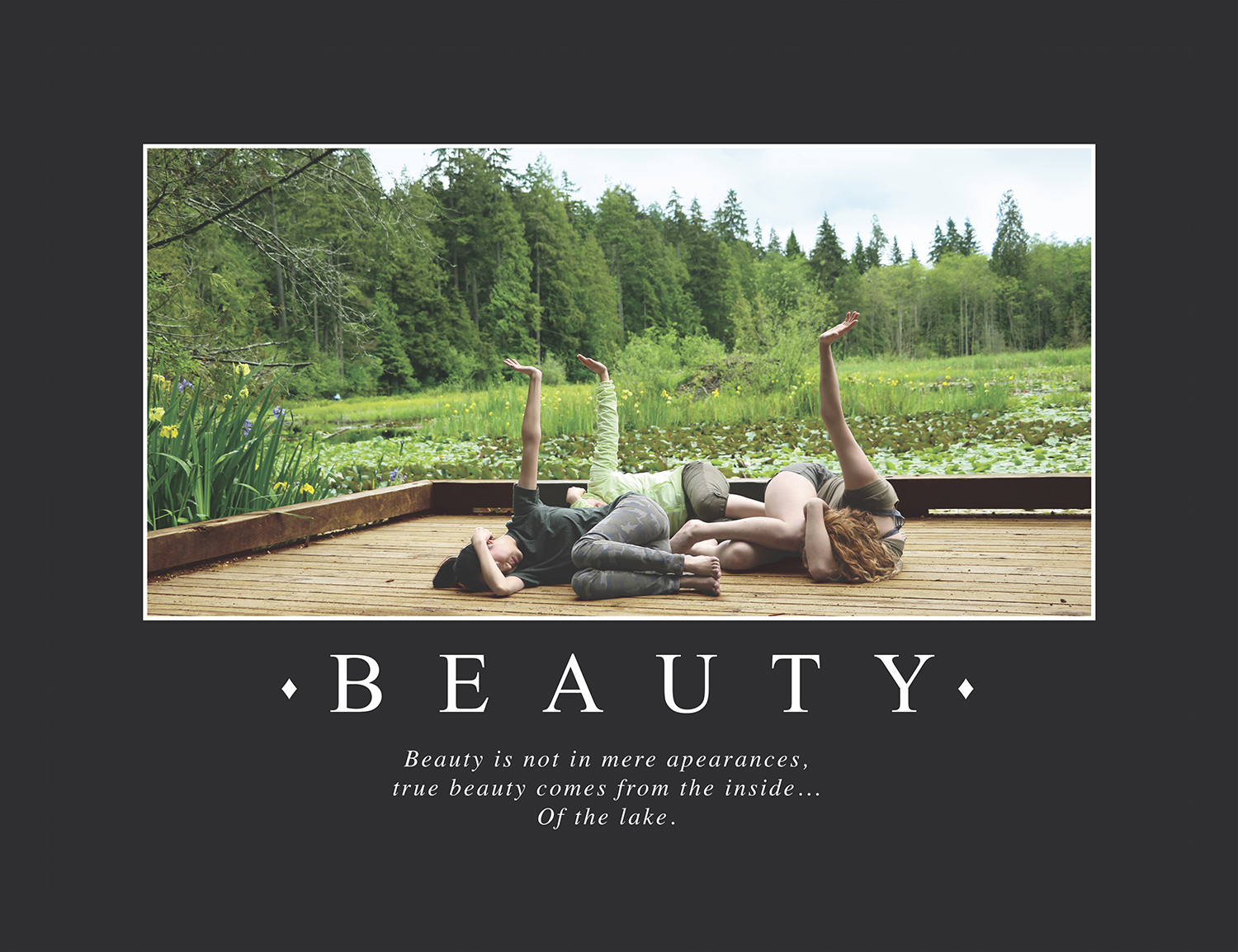
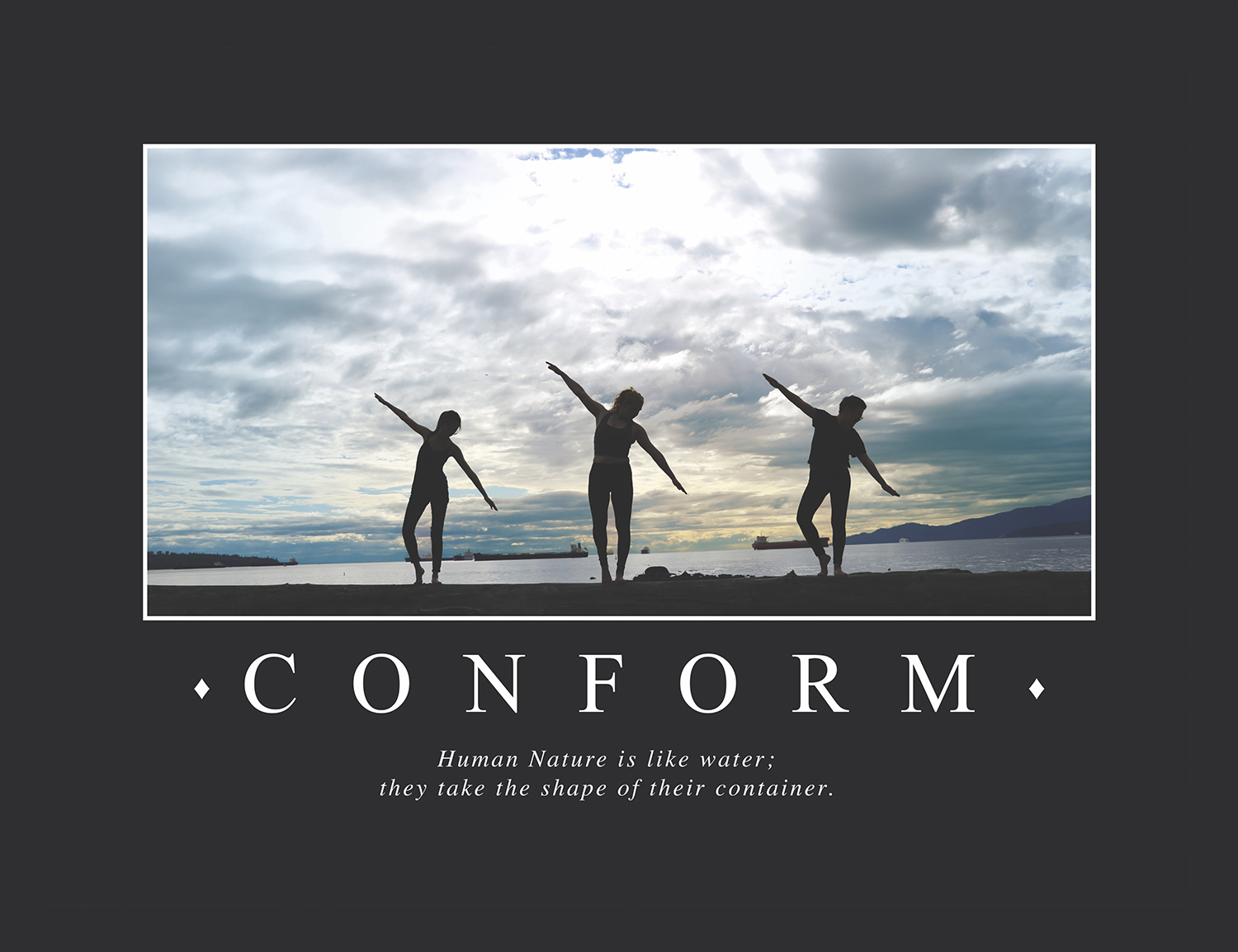
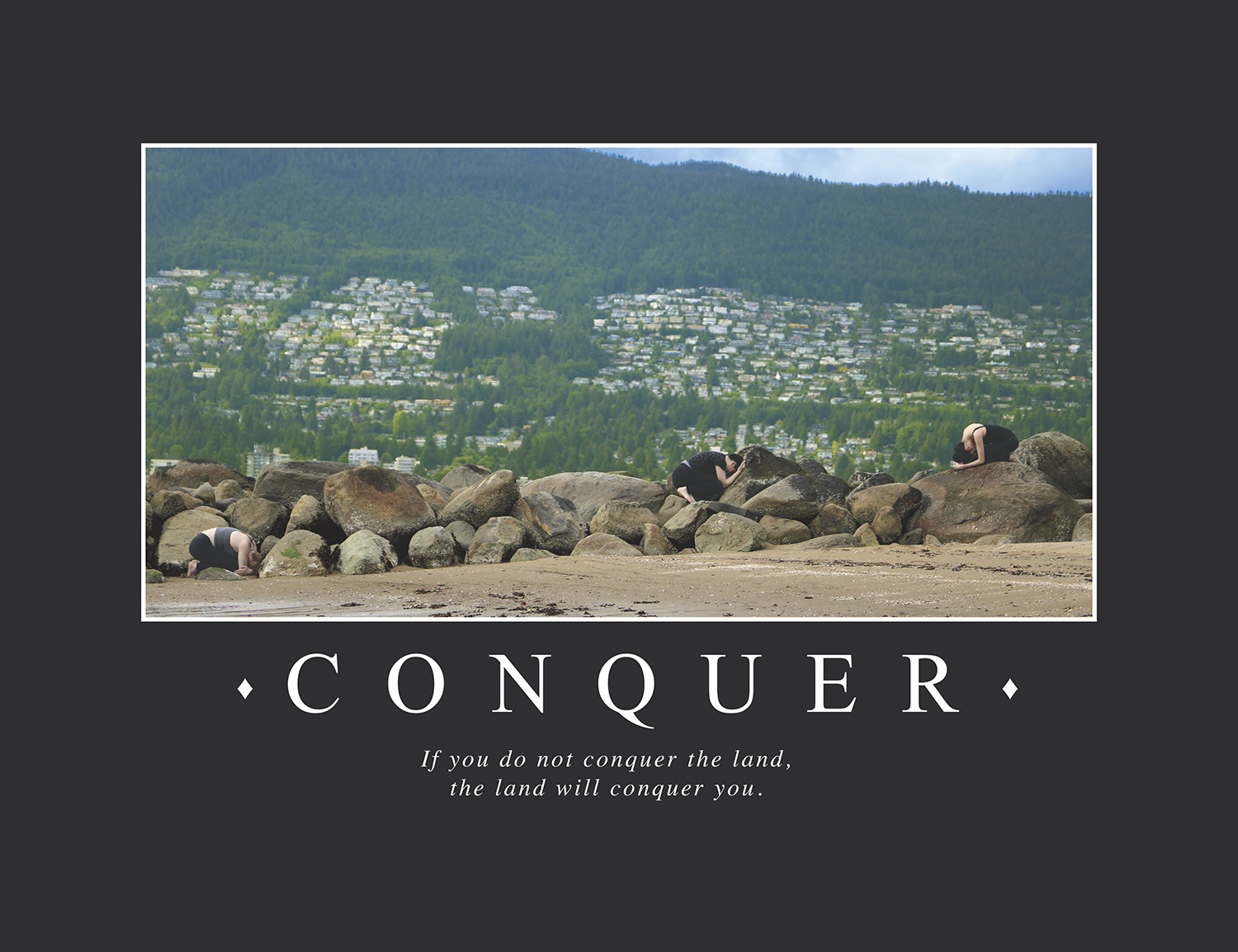
Plastic Picnic by Stephanie Gagne
A picnic is an excursion, where a meal is eaten outdoors during the summer, in a scenic landscape, such as a park or by the ocean. Plastic Picnic is a one-hour event located within Vancouver’s Stanley Park. The event is composed of 3 main elements: culinary art, visual installation and performative recreation. Participants will celebrate the 150-year commemoration of the Canadian Confederation together through food consumption, green party accessories, interactive activities and casual social discourse.
v
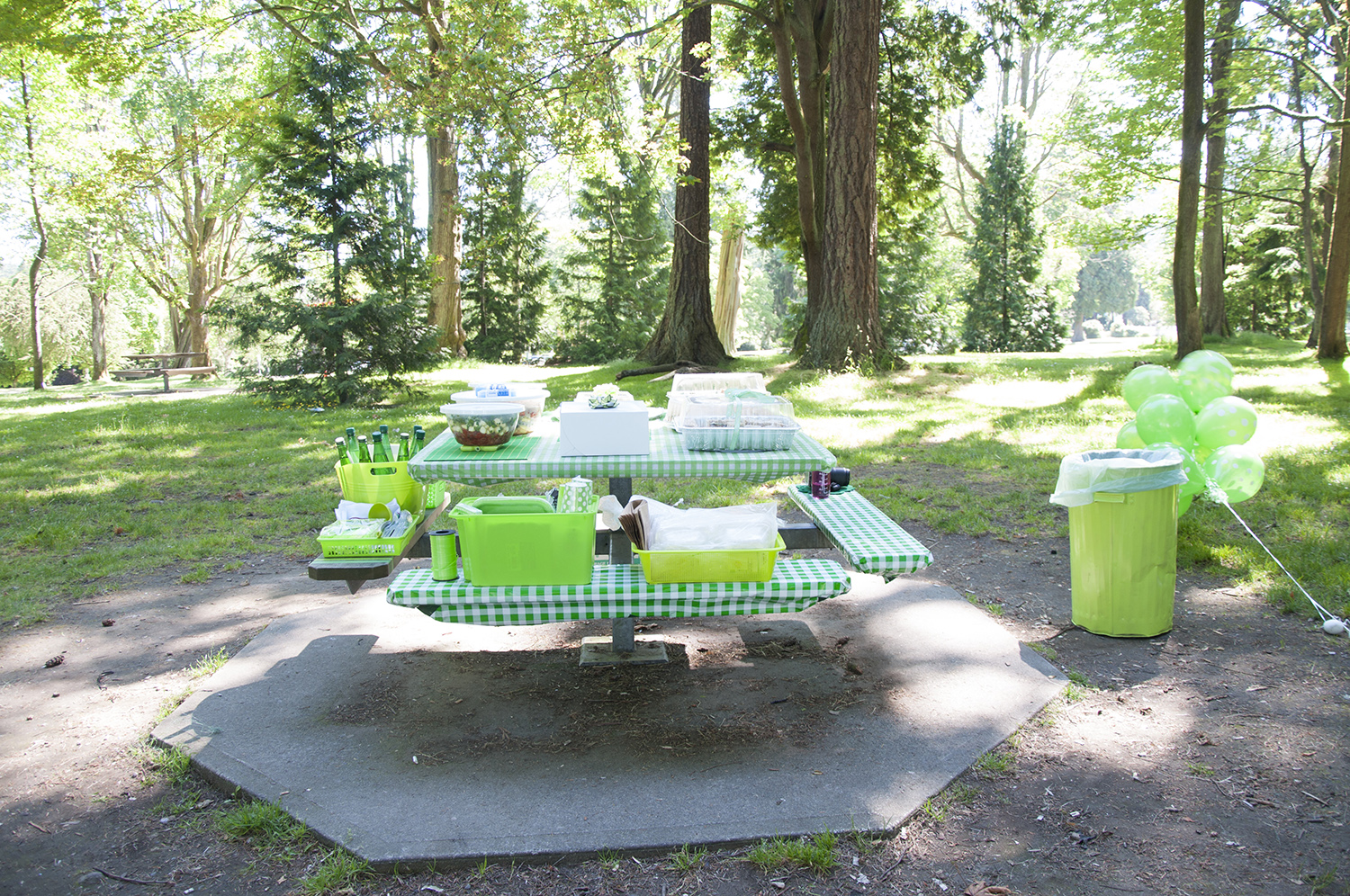
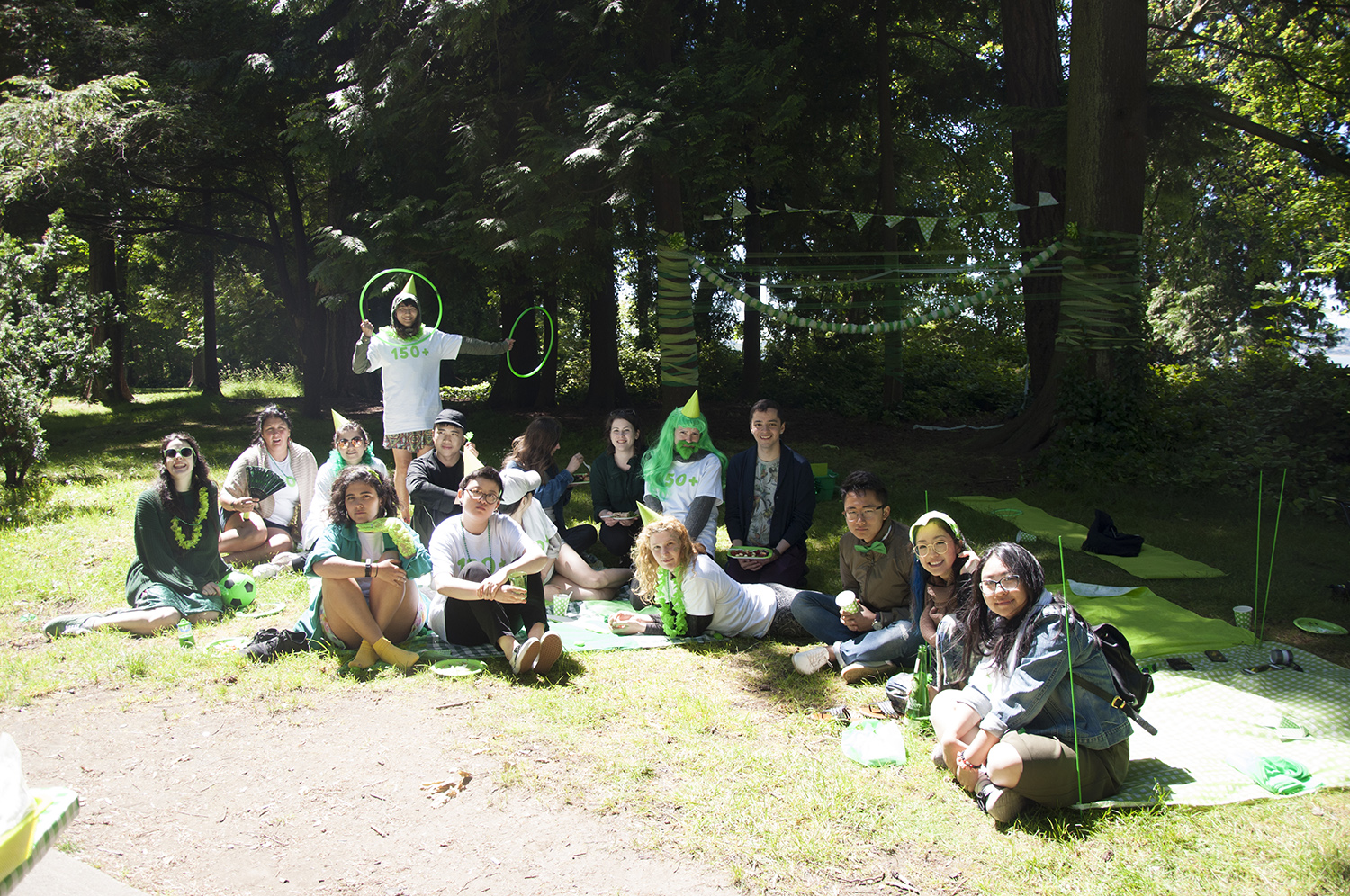
Silently Suffocated (Artist sit-in) by Roxanne Charles
In response and participation with LandMarks 2017, Roxanne Charles will celebrate 150 years of resistance. Roxanne will engage in an artist sit-in where she will explore simultaneously this site and it's rich history as well as her own body as a landscape of colonial violence. This work will explore Stanley Park as a colonial site and look at how Indigenous bodies are very much connected to the landscape. Through employing traditional Salish weaving techniques Roxanne will take a ceremonial approach to illustrating the resilience of indigeneity on the West Coast.
